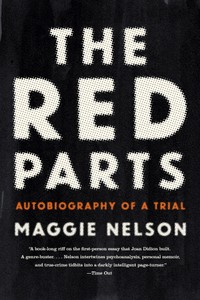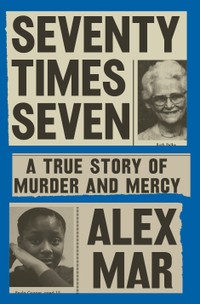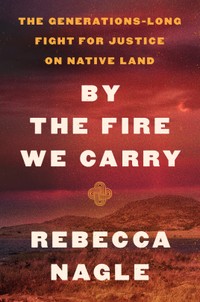Eight Nonfiction Books That Will Frighten You
7 min read
A decade ago, the inaugural season of Serial debuted. The podcast, about the 1999 murder of Hae Min Lee and questions surrounding the arrest and conviction of her former boyfriend, Adnan Syed, drew upon the alchemy of suspenseful storytelling and a taste for the lurid that has enticed Americans for centuries. Serial’s massive popularity, and its week-by-week format, overhauled how the genre was received: Audiences were no longer content with merely consuming the story. They wanted to be active participants, to post theories, drive by suspects’ houses, and call attention to errors.
As a result, the true-crime landscape was transformed. Its popularity has soared, making room for work that not only shocks but also asks deeper questions. There has been a welcome uptick in stories that focus on the victims of violence and the social structures that perpetuate it. But a perennial desire for the macabre doesn’t just dissipate under the umbrella of good intentions. The level of dreck in the genre—particularly cheap, poorly researched media that substitutes flippancy for compassion—continues to rise.
This glut makes it hard to identify the best true crime, which harnesses the instinct for titillation in the service of empathy, justice, and maybe even systemic change. These eight books are some of the most accomplished the genre has to offer. They broaden the definition of true crime itself—and most important, they interrogate their own telling of the story, reflecting an essential self-awareness about mining real people’s grief.

The Phantom Prince, by Elizabeth Kendall
So much has been written about Ted Bundy, who murdered dozens of women and girls in the 1970s, most of it wondering, from the outside, how Bundy got away with so much for so long. Kendall, however, had a more intimate perspective: She was his long-term girlfriend (though she uses a pseudonym here). She thought she knew Bundy well, but as the murders of women in the Pacific Northwest began to spread, and police sketches of a man named Ted circulated, she had to confront her level of denial—and then catalog the collateral damage of being a serial killer’s partner. This book is dedicated to figuring out what she actually knew and was kept from knowing, and Kendall does so in plain (if occasionally awkward) prose that doesn’t shy away from her own blind spots. True-crime memoirs were fairly rare in the early ’80s, when hers was released—and it remains an important one.

Under the Bridge, by Rebecca Godfrey
The horrific 1997 murder of 14-year-old Reena Virk by several other teenagers prompted a reckoning in Victoria, British Columbia. Godfrey, the author of The Torn Skirt, a novel about the effects of a self-destructive girlhood, felt compelled to report on what happened, and why. The fine Hulu series of the same name, released in April and starring Riley Keough and Archie Panjabi, was more about Godfrey’s investigative quest than Virk’s murder. But the original work, which I’ve read multiple times, better depicts the toxic dynamic of teenage girls egging one another on from bullying to more violent acts, while also humanizing the victim and perpetrators.


The Red Parts, by Maggie Nelson
In 2005, Nelson published the poetry collection Jane: A Murder, which focuses on the then-unsolved murder of her aunt Jane Mixer 36 years before, and the pain of a case in limbo. This nonfiction companion, published two years later, deals with the fallout of the unexpected discovery and arrest of a suspect thanks to a new DNA match. Nelson’s exemplary prose style mixes pathos with absurdity (“Where I imagined I might find the ‘face of evil,’” she writes of Mixer’s killer, “I am finding the face of Elmer Fudd”), and conveys how this break upends everything she believed about Mixer, the case, and the legal system. Nelson probes still-open questions instead of arriving at anything remotely like “closure,” and the way she continues to ask them makes The Red Parts stand out.

Hannah Mary Tabbs and the Disembodied Torso, by Kali Nicole Gross
Four years ago, my friend and fellow crime writer Elon Green investigated the alarming lack of true crime written by Black authors; today, white authors still tell most of these stories, most of which are about white victims. This is in part, I’ve come to believe, because so many crime narratives—particularly historical ones—depend on a written record of some kind, which tends to exclude people of color. This book by Gross, a historian based at Emory University, was a revelation to me for uncovering the fascinating, messy story of Tabbs, a formerly enslaved woman, probable fraudster, and murderer in 1880s Philadelphia. Tabbs does not fit into any easy box, and Gross’s careful research places the desperate acts of this particular woman against the backdrop of post-Reconstruction America, a time when the gap between what was promised at the end of slavery and what was actually possible widened sharply.

We Keep the Dead Close, by Becky Cooper
Cooper, a onetime New Yorker staffer, had for years been haunted by a story she’d heard while attending Harvard in the late 2000s: A girl had been murdered, and she had been having an affair with her professor, which the school covered up. The story turned out to be more myth than truth, but Cooper felt compelled to investigate, and she discovered that there had, in fact, been a long-unsolved murder. Some of the details eerily parallel those of The Red Parts—both victims are college students named Jane, both murdered in 1969—but Cooper’s book veers away from Nelson’s. The book, which conjures the vivid, all-too-brief life of the anthropology student Jane Britton, is a furious examination of a culture of complicity at Harvard, where, Cooper points out, sexual-misconduct allegations were (and still are) dismissed or ignored. And like Nelson, Cooper demolishes the concept of closure.

The Third Rainbow Girl, by Emma Copley Eisenberg
Before Eisenberg put out her wonderful novel, Housemates, she worked primarily in the nonfiction space, publishing a 2017 feature story for Splinter about the missing Black trans teen Sage Smith, which was reprinted in my true-crime anthology Unspeakable Acts. She also published this book, a standout hybrid of reportage, memoir, and cultural criticism. Her subject was the 1980 murders of Vicki Durian and Nancy Santomero in Pocahontas County, West Virginia (and the subsequent wrongful conviction of a suspect)—but also the author’s own queer coming of age in the same area of Appalachia. Eisenberg is a warm, compassionate guide through a thicket of violence, abrupt endings, and youthful longings, and her book is an intelligent corrective to common true-crime tropes. “Telling a story is often about obligation and sympathy, identification, and empathy,” she writes. “With whom is your lot cast? To whom are you bound?”


Seventy Times Seven, by Alex Mar
I had been waiting many years for a book about Paula Cooper, the Black teenage girl who was sentenced to death for the robbery and murder of Ruth Pelke, an elderly white woman, in the mid-’80s. Though she committed the crime with three other girls, only 15-year-old Cooper was given the death penalty. She became the youngest person on death row in the country at the time, leading to international outrage, a clemency campaign, and an unlikely friendship with the victim’s grandson, Bill. The points this story makes about the human capacity for empathy, who merits collective forgiveness, and the stubborn persistence of the death penalty are discomfiting. Mar (another Unspeakable Acts contributor) has made a long career of probing deeper questions, and in this book she eschews tidy narratives. Forgiveness does not, in fact, overcome the ramifications of violence, as will become clear in Bill’s home and work life—and in Paula’s, after she is eventually released from prison. Mar masterfully explores who is entitled to mercy, and how we continue to fail prisoners during and after their incarceration.


By the Fire We Carry, by Rebecca Nagle
Finally, this terrific new book, published just last month, looks at the larger picture of Indigenous autonomy and forced removal through the lens of one case—the murder of the Muscogee Nation member George Jacobs by another tribal member, Patrick Murphy—asking whether the state of Oklahoma actually had the jurisdiction to prosecute and execute Murphy. In 2020, the Supreme Court would eventually rule that much of eastern Oklahoma did remain an American Indian reservation; its decision set a far-reaching precedent that, in practice, would prove more complicated to enforce. Nagle, a member of the Cherokee Nation and a resident of Oklahoma, writes with sensitivity and empathy for the Native American communities she grew up in and around. Her work is similar in scope and feel to (and clearly in conversation with) Missing and Murdered and Stolen, the excellent podcasts by the Indigenous Canadian journalist Connie Walker.

When you buy a book using a link on this page, we receive a commission. Thank you for supportingThe Atlantic.



